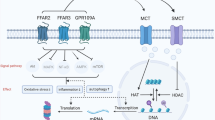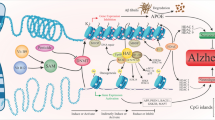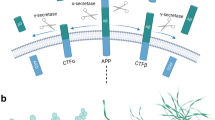Abstract
Alzheimer’s disease (AD) is characterized by extracellular deposition of amyloid-β (Aβ) plaques. These protein deposits impair synaptic plasticity thereby producing a progressive decline in cognitive function. Current therapies are merely palliative and only slow cognitive decline. Poly-N-methylated Aβ-Peptide C-Terminal Fragments (MEPTIDES) were recently shown to reduce Aβ toxicity in vitro and in Drosophila melanogaster, however whether these novel compounds are effective in inhibiting Aβ-induced toxicity in the mammalian brain remains unclear. We therefore investigated whether MEPTIDES have the ability to reduce the neurotoxic effects of Aβ in male Sprague-Dawley (SD) rats. Aβ42 (100 μg, 2 mM) or vehicle (0.15 M Tris buffer) was stereotaxically injected bilaterally into the dorsal hippocampus at a rate of 1 μl/min for 10 min. The effects on hippocampal-mediated learning were subsequently assessed using the Morris water maze (MWM). The presence of apoptotic activity was also assessed by determining the expression levels of active caspase-3 using real-time polymerase chain reaction and Western Blot techniques. In addition, half of the animals (n = 20) received an intraperitoneal (i.p.) injection of MEPTIDES (2 mg/kg) 48 h after intrahippocampal injection of Aβ42. Matrix-assisted laser desorption/ionization-time-of-flight (MALDI –TOF) mass spectrometry (MS) showed that MEPTIDES crossed the blood brain barrier (BBB) and revealed their distribution in the rat brain. Rats treated with Aβ42 displayed spatial learning deficits and increased hippocampal caspase-3 gene (CASP-3) expression which was reversed by subsequent injection of MEPTIDES. The present results show that MEPTIDES have the potential to reverse the toxic effects of Aβ42 in vivo.





Similar content being viewed by others
References
Akhter R, Sanphui P, Das H, Saha P, Biswas SC (2015) The regulation of p53 up-regulated modulator of apoptosis by JNK/c-Jun pathway in β-amyloid-induced neuron death. J Neurochem 134:1091–1103
Awasthi A, Matsunaga Y, Yamada T (2005) Amyloid-beta causes apoptosis of neuronal cells via caspase cascade, which can be prevented by amyloid-beta-derived short peptides. Exp Neurol 196:282–289
Balducci C, Forloni G (2014) In vivo application of beta amyloid oligomers: a simple tool to evaluate mechanisms of action and new therapeutic approaches. Curr Pharm Des 20:2491–2505
Bharadwaj PR, Dubey AK, Masters CL, Martins RN, Macreadie IG (2009) Aβ aggregation and possible implications in Alzheimer's disease pathogenesis. J Cell Mol Med 13(3):412–421
Buckingham SD, Jones AK, Brown LA, Satelle DB (2009) Nicotinic acetylcholine receptor signalling: roles in Alzheimer's disease and amyloid neuroprotection. Pharmacol Rev 61:39–61
Butterfield DA, Kanski J (2002) Methionine residue 35 is critical for the oxidative stress and neurotoxic properties of Alzheimer's amyloid beta-peptide 1-42. Peptides 23(7):1299–1309
Cetin F (2013) Role of oxidative stress in aβ animal model of alzheimer's disease: vicious circle of apoptosis, nitric oxide and age. In: Kishore U (ed) Neurodegenerative diseases. InTech, pp 77-99. https://doi.org/10.5772/45957
Chu L (2012) Alzheimer’s disease: early diagnosis and treatment. Hong Kong Med J 18:228–237
Colombo M, Broadbent N (2000) Is the avian hippocampus a functional homologue of the mammalian hippocampus? Neurosci Biobehav Rev 24:465–484
Daniels WM, van Rensburg SJ, van Zyl JM, Taljaard JJ (1998) Melatonin prevents beta-amyloid-induced lipid peroxidation. J Pineal Res 24:78–82
Daniels WM, Hendricks J, Salie R, Taljaard JJ (2001) The role of the MAP-kinase superfamily in β-amyloid toxicity. Metab Brain Dis 16:175–185
Di Carlo M (2010) Beta amyloid peptide: from different aggregation forms to the activation of different biochemical pathways. Eur Biophys J 39:877–888
dos Santos VV, Santos DB, Lach G, Rodrigues ALS, Farina M, De Lima TCM, Prediger RD (2013) Neuropeptide Y (NPY) prevents depressive-like behavior, spatial memory deficits and oxidative stress following amyloid-β (Aβ 1–40) administration in mice. Behav Brain Res 244:107–115
Fortin JS, Benoit-Biancamano M-O (2015) Inhibition of islet amyloid polypeptide aggregation and associated cytotoxicity by nonsteroidal anti-inflammatory drugs. Can J Physiol Pharmacol 94:35–48
Harricharan R, Thaver V, Russell VA, Daniels WM (2015) Tat-induced histopathological alterations mediate hippocampus-associated behavioural impairments in rats. Behav Brain Funct 11:1
Hogan DB (2014) Long-term efficacy and toxicity of cholinesterase inhibitors in the treatment of Alzheimer disease. Can J Psychiatr 59:618–623
Hu D et al (2012) Deoxyschizandrin isolated from the fruits of Schisandra chinensis ameliorates Aβ1–42-induced memory impairment in mice. Planta Med 78:1332–1336
Izzo NJ et al (2014) Alzheimer's therapeutics targeting amyloid beta 1-42 oligomers 1: abeta 42 oligomer binding to specific neuronal receptors is displaced by drug candidates rthat improve cognitive deficits. PLoS ONE 9(11):e111898
Kar S, Slowikowski SPM, Westaway D, Mount HTJ (2004) Interactions between β-amyloid and central cholinergic neurons: implications for Alzheimer's disease. J Psychiatry Neurosci 29(6):427–441
Kokkoni N, Stott K, Amijee H, Mason JM, Doig AJ (2006) N-Methylated peptide inhibitors of β-amyloid aggregation and toxicity. Optimization of the inhibitor structure. Biochemist 45:9906–9918
Kruger NJ (2009) The Bradford method for protein quantitation. In: Walker JM (ed) The Protein Protocols Handbook, 2 edn. Humana Press, USA, pp 15–21
Lanznaster D et al (2016) Guanosine prevents anhedonic-like behavior and impairment in hippocampal glutamate transport following amyloid-β1–40 administration in mice. Mol Neurobiol:1–15
Liu A et al (2014) 5-Hydroxymethylfurfural, an antioxidant agent from Alpinia oxyphylla Miq. improves cognitive impairment in Aβ 1–42 mouse model of Alzheimer's disease. Int Immunopharmacol 23:719–725
Lu P et al (2009) Silibinin prevents amyloid beta peptide-induced memory impairment and oxidative stress in mice. Br J Pharmacol 157:1270–1277
Mackraj I, Ramesar S, Singh M, Govender T, Baijnath H, Singh R, Gathiram P (2008) The in vivo effects of Tulbhagia violacea on blood pressure in a salt-sensitive rat model. J Ethnopharmacol 117:263–269
Merlo S, Basile L, Giuffrida ML, Sortino MA, Guccione S, Copani A (2015) Identification of 5-Methoxyflavone as a Novel DNA Polymerase-Beta Inhibitor and Neuroprotective Agent against Beta-Amyloid Toxicity. J Nat Prod 78:2704–2711
Paxinos G, Watson C, Calabrese E, Badea A, Johnson GA (2015) MRI/DTI Atlas of the Rat Brain. Elsevier, London
Pratim Bose P et al (2009) Poly-N-methylated amyloid β-peptide (Aβ) C-terminal fragments reduce Aβ toxicity in vitro and in Drosophila melanogaster. J Med Chem 52:8002–8009
Raschetti R, Albanese E, Vanacore N, Maggini M (2007) Cholinesterase inhibitors in mild cognitive impairment: a systematic review of randomised trials. PLoS Med 4:e338
Tillement L, Lecanu L, Papadopoulos V (2011) Alzheimer's disease: effects of β-amyloid on mitochondria. Mitochondrion 11:13–21
Venigalla M, Gyengesi E, Münch G (2015) Curcumin and Apigenin–novel and promising therapeutics against chronic neuroinflammation in Alzheimer's disease. Neural Regen Res 10:1181
Wang X, Wang L, Xu Y, Yu Q, Li L, Guo Y (2016) Intranasal administration of Exendin-4 antagonizes Aβ31–35-induced disruption of circadian rhythm and impairment of learning and memory. Aging Clin Exp Res 28:1259–1266
Wattmo C, Minthon L, Wallin ÅK (2016) Mild versus moderate stages of Alzheimer's disease: three-year outcomes in a routine clinical setting of cholinesterase inhibitor therapy. Alzheimers Res Ther 8:1
Yan JJ, Kim DH, Moon YS, Jung JS, Ahn EM, Baek NI, Song DK (2004) Protection against beta-amyloid peptide-induced memory impairment with long-term administration of extract of Angelica gigas or decursinol in mice. Prog Neuro-Psychopharmacol Biol Psychiatry 28:25–30
Yankner BA, Lu T (2009) Amyloid β-protein toxicity and the pathogenesis of Alzheimer's disease. J Biol Chem 284(8):4755–4759
Zhu Z, Wan H, Li J (2011) Chuanxiongzine-astragaloside IV decreases IL-1β and Caspase-3 gene expressions in rat brain damaged by cerebral ischemia/reperfusion: a study of real-time quantitative PCR assay. Sheng li xue bao:[Acta physiologica Sinica] 63:272–280
Acknowledgements
The authors acknowledge the technical and editorial assistance by Miss Chloe Eliza Flinn.
This work was supported by the National Research Foundation of South Africa and the University of KwaZulu-Natal, College of Health Sciences.
Author information
Authors and Affiliations
Corresponding author
Ethics declarations
Conflict of interest
The authors declare that they have no conflict of interest.
Ethical approval
All procedures performed in studies involving animals were in accordance with the ethical standards of the institution at which the studies were conducted (ethical clearance no. 048/13/Animal).
Rights and permissions
About this article
Cite this article
Sibiya, S.G., Mbandla, M.V., Govender, T. et al. Poly-N-methylated Aβ-Peptide C-Terminal fragments (MEPTIDES) reverse the deleterious effects of amyloid-β in rats. Metab Brain Dis 33, 387–396 (2018). https://doi.org/10.1007/s11011-017-0118-x
Received:
Accepted:
Published:
Issue Date:
DOI: https://doi.org/10.1007/s11011-017-0118-x




